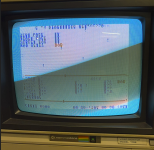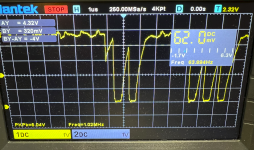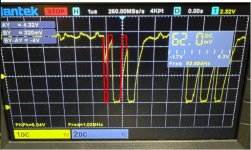When you say the data and address lines look terrible, all I see in the recording is the typical sampling defects of digital scopes.
If you had a wide bandwidth analog scope, say in the range of 100 to 400MHz, the waveforms would look more normal. If you look at the steps in the sample waveform, it becomes easy to see that your scope is not resolving what the real waveform might actually look like.
To avoid these types of sample rate issues, I use analog scopes, the Tek 2465B rated to 400MHz, but it can easily view a 700MHz waveform, or the Tek 465/464/466 which is good to over 100MHz. One trouble with digital scopes, is that the marketing rhetoric tries to impress people with sample rates, but they derive no equivalence to the capability of an analog scope to display a wave, which in theory will have a sample rate equal to the inverse of the Planck interval. There are no discontinuities and interpolations between them, to confuse the displayed picture.
Also as noted, if it is a thermal problem, freeze spray is your friend. Though sometimes the effects can be too diffuse. If you want to cool a specific part, one way is to put IPA on a cue tip and apply it to a specific part, and keep applying it. The latent heat of evaporation drags heat from just that one part and it can be easier to locate it.





